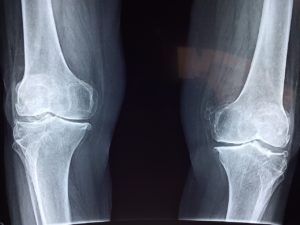Vitamin D [Show Notes]

Vitamin D Basics
Vitamin D is made by your skin.
Lots of foods are fortified with Vit D.
Vitamin D2 is plant-based. Plants make vitamin D then you eat them and absorb it. This is also the type of Vitamin D that is added to other foods.
Vitamin D3 is animal-based. You absorb very little Vitamin D from animal food sources. This is the type that your skin makes.
Review
The membranes of your cells are made up of cholesterol. It allows them to stay fluid and flexible, and it allows diffusion of some nutrients.
UV-B rays come down from the sun and travel through the top layer of your skin. Those rays interact with the cholesterol in the skin cells and cause it to break away and it starts a changing process as that loose molecule makes it way to the bloodstream. *Think the Hulk transformation*. By the time it reaches the bloodstream, it has become D3 (~ 12 hour long process).
Vit D3 = Calcitriol (tri = 3)
Vit D2 = Calcidiol (di = 2)
The news will tell you that Vit D is needed to prevent the Winter Blues or that it’s good for your bones.
Deeper Stuff
Vitamin D has 2 jobs to help with your bone health. It tells your intestines to make calcium-carrying and phosphorus-carrying proteins, so when you eat foods that contain calcium or phosphorus, the cells of the small intestines will have the ability to transport these molecules into the bloodstream. Then in your periosteum (the membrane that covers your bones), Vitamin D works with parathyroid hormone to tell the periosteum cells to make the same kinds of proteins to get the calcium out of the blood and into the bone-building process.
Vitamin D also has an important role in your immune system. It plays a part in cell differentiation. It helps an immune system cell know which type of cell it needs to specialize as (B-cell, T-cell, macrophage) to do the optimum job based on the type of invader that has entered your body.
While sun exposure stimulates Vit D production, there has to be a balance to avoid skin aging and risks of cancer. Taking Vit D supplements can be a safer alternative.
Connect with me
Support us on Patreon
*NEW* Join the Pharmacist Answers Podcast Community on Facebook
Subscribe: iTunes, Stitcher, GooglePlay, TuneIn Radio
Music Credits: “Radio Martini” Kevin MacLeod (incompetech.com) Licensed under Creative Commons: By Attribution 3.0 http://creativecommons.org/licenses/by/3.0/

